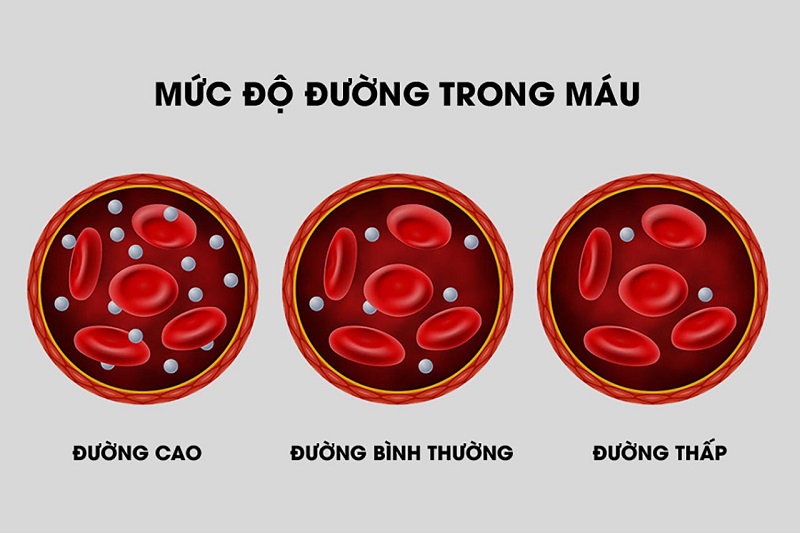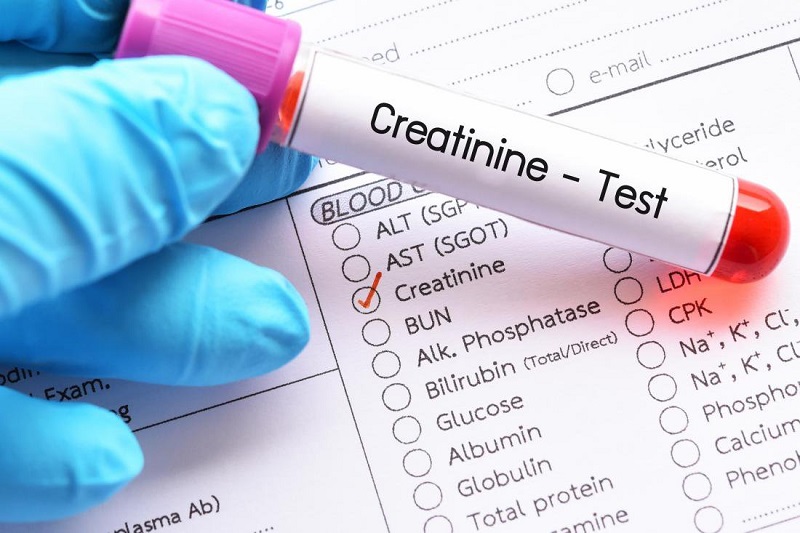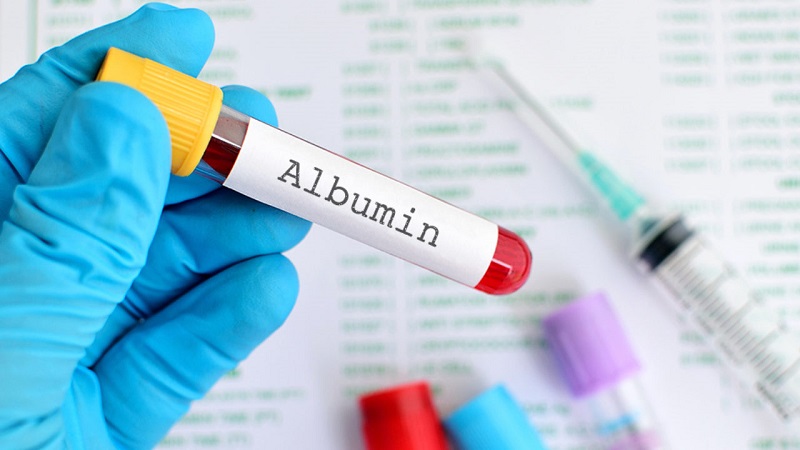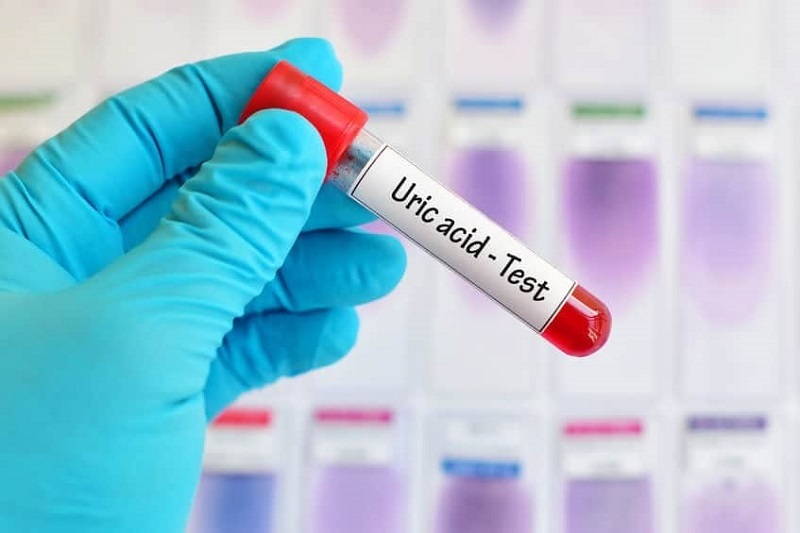The biochemical blood test is a common test often ordered by doctors in the course of diagnosing and monitoring the treatment of patients. However, many people still do not fully understand the nature of a biochemical blood test? The following article will help you learn more about this issue.
What Is Included In Blood Biochemistry Test?
Biochemical tests, which measure substances (protein, sugar, oxygen, etc.) in blood and urine, are widely used in the diagnosis of diseases and the determination of treatment. The activity of each organ in the body affects one or several of the specific biochemical indicators. Therefore, the determination of concentration and comparison of biochemical indices in blood components can help doctors diagnose many diseases such as liver diseases such as high liver enzymes, hepatitis, diabetes, fibrosis. atherosclerosis, myocardial infarction, …
Meaning Of Blood Biochemistry Test Indicators
The determination of blood biochemical indices is very important in diagnosing the health of the organs of the body. However, not everyone knows what the significance of biochemical indices say. Below are the meanings of the most common blood biochemical indices.
1. Blood glucose concentration (Blood glucose concentration)
Glucose is the main fuel source for the cells to generate energy and synthesize glycogen, amino acids, and some fats in the body.
The concentration of glucose in the blood, also known as the blood glucose concentration, is regulated by the liver and is maintained quite stable. When there are signs of abnormal blood sugar levels, it can be due to a disorder or a sign of some kind of medical condition.
- Low blood sugar levels will cause central nervous system disorders, severe cases can lead to myasthenia gravis, disability, coma.
- High blood sugar can be a sign of diabetes.
The blood glucose index is often combined with the HbA1C test to diagnose and monitor the treatment of diabetic and hypotensive patients. Normal blood glucose concentration is about 3.9 – 6.4 mmol / l.

and activity of substances in the blood composition
2. Blood urea
Blood urea is an important indicator in blood biochemistry assay. Urea is the main degradation product of proteins in the body. Urea will be filtered in the glomeruli to be eliminated from the body through the urine. Therefore, the area index will be the basis for assessing kidney function and kidney diseases. At the same time, it is also the basis for evaluating the level of protein in the diet.
- The normal value of blood urea in the body is 2.5 – 7.5 mmol / l.
- Blood urea often increases in cases of patients with kidney diseases such as glomerulonephritis, kidney failure, kidney stones, tubular inflammation, ureteral stones, dehydration due to high fever, diarrhea, congestive heart failure, …
- The decrease in blood urea is usually caused by a low protein diet, nephrotic syndrome, fluid transfusion, pregnant women, and impaired liver function leading to a decrease in urea synthesis.
3. Serum creatinine
Serum creatinine is a product of muscle creatinine phosphate degradation and these creatinines are completely filtered out by the kidneys. The normal value of serum creatinine is between 62-120 mmol / l for men and 53 to 100 mmol / l for women.
Serum creatinine usually increases in cases of kidney failure, heart failure, hypertension, gout, hyperthyroidism, …
Serum creatinine usually decreases in cases of pregnant women, people with muscle atrophy, paralysis, using anti-epileptic drugs, …

4. AST (SGOT), ALT (SGPT), GGT
ATS, ALT, GGT are indicators used to evaluate and diagnose liver diseases such as acute and chronic hepatitis, damage to the liver parenchyma (viral hepatitis, liver damage caused by drinking alcohol. , …). In addition, these indexes are also used in the screening and diagnosis of cardiomyopathy.
Normal values of all three indicators are below 35 U / L for women and less than 50 U / L for men.
5. ALP
The ALP index is also known as the alkaline Phosphatase index. ALP is present mainly in the liver and bones. The ALP index increases in the cases of diseases related to hepatobiliary and bone such as rickets, metabolic disorders in the bones, increased bile ducts, prostate cancer. Normal ALP <120 U / L.
6. Albumin
Albumin is a protein synthesized in the liver, they account for about 60% of the total protein in the serum. Albumin has the function of creating osmotic pressure, transporting metabolites, free fatty acids, hormones, drugs, … In addition, they also play a role in providing amino acids for protein synthesis in tissues.
The albumin index plays a role in assessing liver function. The normal human albumin content is in the range of 35 – 50 g / L.

7. Bilirubin
Bilirubin is divided into three characteristic indices: total bilirubin, indirect bilirubin, and direct bilirubin. The bilirubin index is often used to diagnose hemolytic jaundice, biliary obstruction, hepatitis.
Normal total bilirubin index is <21 umol / L.
8. Blood fat test index
The blood lipid index includes 4 indexes of total cholesterol, blood lipid HDL-C, LDL-C, Triglyceride.
- Total cholesterol
The cholesterol index is used to diagnose and monitor in cases of dyslipidemia, atherosclerosis, hypertension, assessment of liver function, obesity, or indicated for periodic health checks in people above. 40 years old.
Normal human cholesterol concentration is about 3.9 – 5.2 mmol / l.
The blood cholesterol index usually increases in cases of dyslipidemia, atherosclerosis, diabetes mellitus, jaundice, hypothyroidism, biliary obstruction, pregnant women, …
- Blood Lipid Test Index HDL-C (HDL cholesterol)
HDL-C index helps to evaluate dyslipidemia. This index plays a role in transporting cholesterol deposited in the walls of blood vessels back to the liver, helping to prevent plaque formation in the walls of blood vessels, so it is also known as good cholesterol.
Normal HDL-C concentrations are above 0.9 mmol / L. HDL-C levels often decrease in cases of atherosclerosis, obesity, smoking, inactivity, …
- LDL-C (LDL cholesterol)
The LDL-C index is one of the important indicators to evaluate dyslipidemia, atherosclerosis, hypertension, coronary artery disease, …
LDL-C transports cholesterol to the blood vessels and is the main cause of atherosclerosis, so they are also known as bad cholesterol.
The higher the LDL-C concentration, the higher the risk of atherosclerosis. A normal LDL-C reading is 3.4 mmol / L or less.
The LDL-C index usually increases in cases of obesity, atherosclerosis, dyslipidemia. LDL-C index usually decreases in cases of exhaustion, cirrhosis, malabsorption.
- Triglycerides
As with the above indicators, triglyceride index is often indicated for testing in cases of dyslipidemia, atherosclerosis, hypertension, obesity, and inactivity.
The normal human triglyceride content ranges from 0.46 to 1.88 mmol / l. Triglycerides usually decrease in cases of exhaustion, hyperthyroidism, malabsorption, after intense physical activity. The triglyceride index increases in cases of obesity, cirrhosis, hypothyroidism, atherosclerosis, dyslipidemia, nephrotic syndrome, diabetes mellitus.
9. Test of ion map
This test usually checks the index of Na +, K +, Cl-, Ca2 + ions
- Na +
This is the main cation of extracellular fluid, responsible for water retention. When excess Na +, the water will be reabsorbed in the kidneys. The normal value of the concentration of Na + in the blood is 135 – 145 mmol / l.
The concentration of Na + in the blood decreases in cases of fluid retention due to renal failure, heart failure, cirrhosis, or sodium loss due to vomiting, hemorrhage, diarrhea, burns, etc. The concentration of Na + in the blood usually increases in cases of hyperemia. aldosterone, drugs containing corticosteroids, dehydration, …
- K +
Ion K + is the electrolyte component of the intracellular fluid. The normal concentration of K + in the blood is about 3.5 to 5.0 mmol / l.
The concentration of K + ions in the blood usually decreases with diarrhea, vomiting. This concentration in the blood increases in case of renal failure, metabolic enzyme inhibitors, potassium-sparing diuretics.
- Cl-
Cl- ions are the main constituent of extracellular fluid. The Cl-anion combined with the HCO3- ion plays a role in maintaining the alkaline-acid balance in the body. In addition, the Cl- ion also holds a number of other functions such as maintaining osmotic pressure and water balance in the body, acting as a component of the buffer system, maintaining neutral charge, and supporting the digestive process. The normal Cl- ion concentration value is 98 – 106 mmol / l.
Cl- ion concentration usually increases in cases of salty eating, kidney failure, coma, metabolic acidosis, anaphylaxis, etc. and this concentration usually decreases with prolonged vomiting (pyloric stenosis), diarrhea. , loss of water level causes metabolic alkalosis or binge eating, etc.
- Ca ++
Ca ++ ions be metal ions that are abundant in the body? However, only 0.5% of the total amount of ca ++ ions is exchanged. Ca ++ plays an important role in heart function, muscle contraction, conduction of nerve impulses, and the body's grip process. Ca ++ concentrations usually decrease with alkaline infection and increase with acidosis. The normal value of Ca ++ index is about 4.2 – 5.2 mEq / l (2.1 – 2.6 mmol / l). Ca ++ cation concentration often increases when patients with thyrotoxicosis, hyperparathyroidism, excess vitamin D. This concentration usually decreases when vitamin D deficiency, hypoparathyroidism, etc.
10. Uric Acid Test
Uric acid concentration is the basis for diagnosing and monitoring the treatment of some diseases such as gout, kidney disease, etc. The index of uric acid in normal people is 180 – 420 mmol / l for men and 180 – 360 mmol / l for women. The concentration of uric acid in the blood usually increases in cases of gout, obesity, heart failure, kidney failure, hypothyroidism, psoriasis, and pre-eclampsia, etc.

The concentration of uric acid in the blood usually decreases in cases of liver cell damage, Wilson disease, Fanconi disease, Hodgkin disease, etc.
How Much Do Biochemistry Blood Test Cost?
The biochemical blood test is one of the very popular tests available today. The system of machines and supportive medical services for blood biochemical testing in particular and blood testing, in general, is getting better and better.
Biochemical blood test for money is always a concern of many people. However, according to the actual survey, there is no fixed cost for blood biochemical testing, the cost of testing can range from a few hundred to several million. The cost of biochemical blood tests also depends on the hospital or home sampling service, whether the results are required to be taken at all times, or waiting for the results to be in order. Normally, public hospitals with a hospital fee guarantee of insurance will have a much lower cost compared to private hospitals that do not have a hospital fee guarantee under insurance.
The biochemical blood test technique belongs to a group of complex techniques, consisting of many stages and analysis on many different indicators. Biochemical tests have high diagnostic value and are an important basis to support doctors in diagnosing and treating diseases. In order for the biochemical tests to have accurate results, doctors or technicians will clinically examine and then perform tests to get the most accurate diagnosis.
For more information about our test menu and price list, please click here.
The site cannot and does not contain medical advice. The medical information is provided for general informational and educational purposes only and is not a substitute for professional advice. Accordingly, before taking any actions based upon such information. We encourage you to consult with the appropriate professionals.

 1900 1717
1900 1717 